Prep: 10 mins
Cook: 15 mins
Cooling Time: 2 hrs
Total: 2 hrs 25 mins
Servings: 6 Servings
Yield: 1 1/2 Quarts
Persian ice cream, with its uniquely luminous yellow color and playful flavors of saffron and rosewater, is an outstanding departure from the more commonplace vanilla, strawberry, and chocolate ice creams.
Bastani sonati (traditional ice cream, in Farsi) is a well-known ice cream in Iran that is very familiar and deeply endearing to all Iranians. For me, bastani sonati conjures up memories of my carefree childhood and hot summer days growing up in Tehran and particularly our vacations on the shores of the Caspian Sea.
It will probably come as no surprise that the national ice cream of Iran has a signature saffron flavor. Saffron, truly a precious spice, is widely grown in Iran and used in many ways in Persian cooking and baking. But neither the flavor profile nor the texture of bastani sonati stops there. Rosewater, vanilla extract, and mastic add a fragrant complexity, and the mastic (traditionally combined with salep) also creates a gooey and stretchy texture that is an authentic feature of Middle Eastern ice creams. Finally, bastani sonati is punctuated by the addition of pieces of bright green pistachio and white flakes of frozen heavy cream.
Rosewater, distilled from rose petals and also a mainstay in Persian cuisine, does not have a strong flavor by itself but adds highly floral and aromatic notes. Mastic is a hardened resin that complements both sweet and savory dishes by adding a delightful and subtle flavor as well as a slightly chewy texture. Since bastani sonati is packed with other aromatic ingredients, mastic can be eliminated, but I recommend retaining it if possible for its flavor and texture contributions. Salep – also spelled saleb, sahlep, or sahlab – is a starchy powder made from the root of an orchid variety. However, it can be quite difficult to find, so for this recipe, it has been replaced by the more readily available cornstarch.
Bastani sonati is often nestled between two thin wafers and served as a sandwich. Otherwise, it can be scooped into a serving dish and served as is.
“This ice cream is wonderfully fragrant and refreshing, with a little added crunch from the pistachios. It is perfect as is, but would also be delicious made into sandwiches with wafers. Remember to break your frozen cream into fairly small pieces to ensure it is evenly distributed while churning.” — Julia Hartbeck
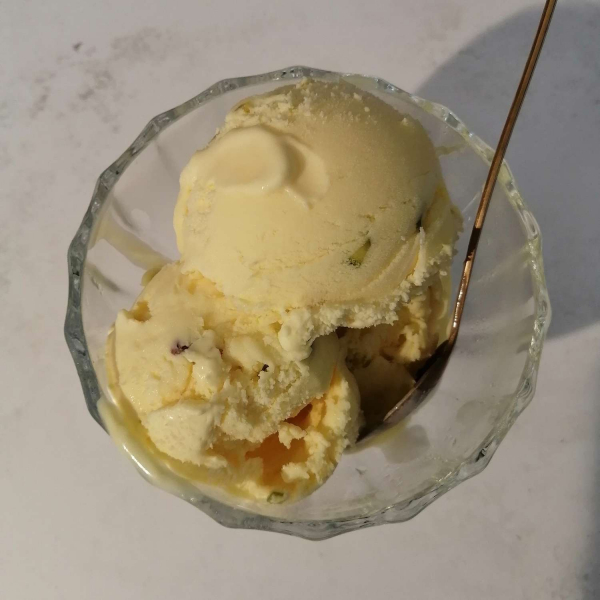
A Note From Our Recipe Tester
Ingredients
-
2 cups heavy cream, divided
-
3 cups whole milk, divided
-
3 tablespoons cornstarch
-
1/2 teaspoon saffron threads
-
1 cup sugar
-
1/2 teaspoon mastic powder
-
Pinch salt
-
1/2 teaspoon pure vanilla extract
-
2 tablespoons rosewater
-
2 tablespoons coarsely chopped raw pistachios
Steps to Make It
-
Gather the ingredients.

-
Pour 1/2 cup of heavy cream into a small, flat, rimmed plate or bowl and freeze until frozen solid, about 1 hour.
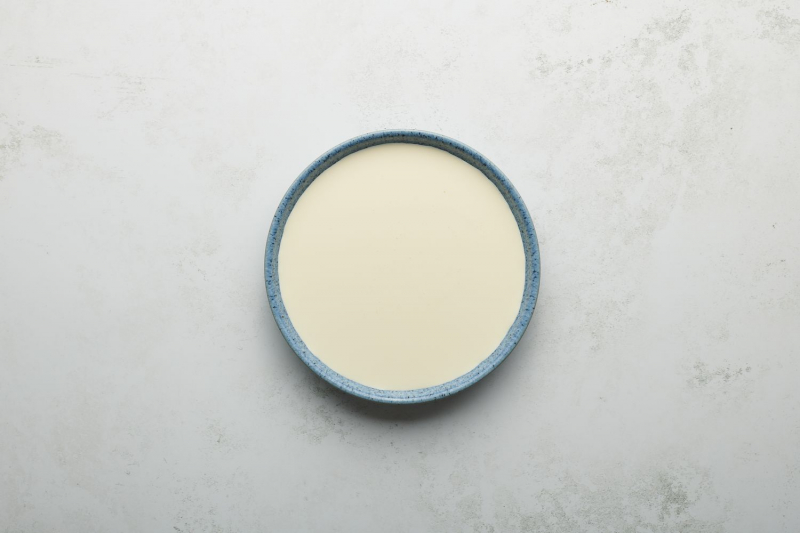
-
In a small bowl, combine 1/3 cup of milk with the cornstarch. Stir until completely smooth. Set aside.
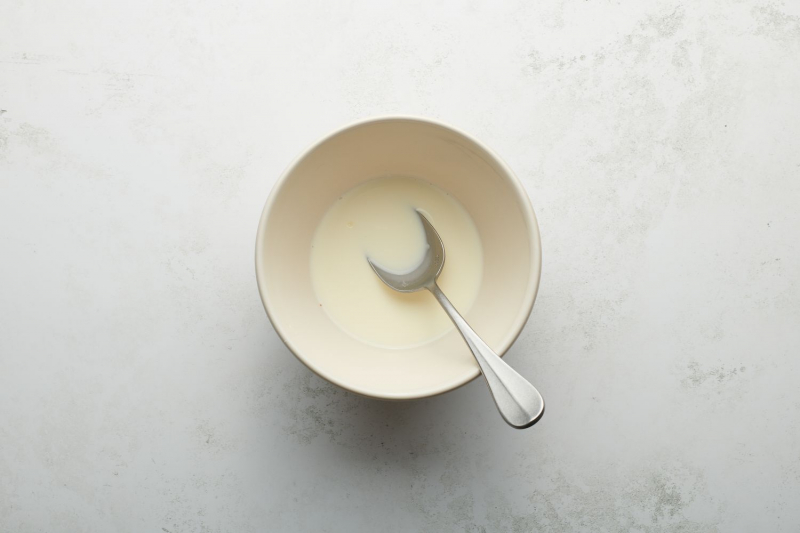
-
Using a mortar and pestle, grind the saffron threads to a fine powder. Set aside.

-
Combine the remaining 1 1/2 cups heavy cream, the remaining 2 2/3 cups milk, sugar, mastic powder, salt, and vanilla in a large saucepan.
Bring to a gentle simmer over medium-high heat, stirring frequently. Continue to cook for about 10 minutes, being sure to stir the mixture frequently to avoid any milk crusting on the bottom.
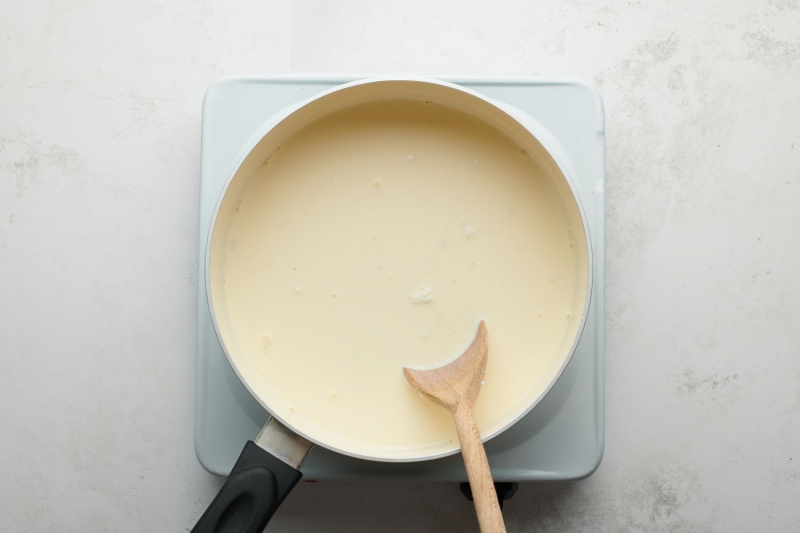
-
Reduce the flame to low when the milk starts to steam. Do not boil.
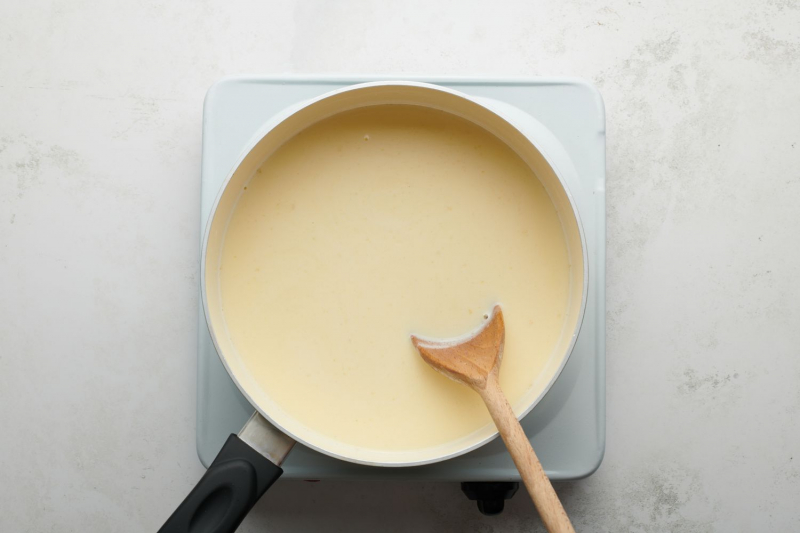
-
Add the ground saffron and rosewater, stirring to combine. The milk mixture should turn a vibrant golden color and become quite aromatic.

-
Stir the milk-cornstarch mixture once more and add it to the saucepan. Continue to cook over medium heat, stirring gently, until the mixture has thickened slightly, 4 to 5 minutes.

-
Transfer to a medium shallow bowl. Let cool to room temperature. Cover and refrigerate for 2 hours, or up to overnight.
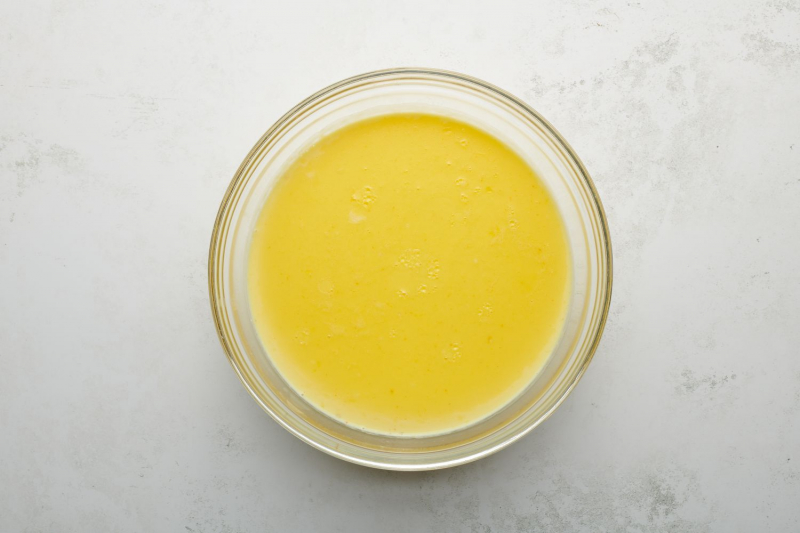
-
Transfer the chilled milk mixture to an ice cream maker. Churn according to the manufacturer’s instructions.
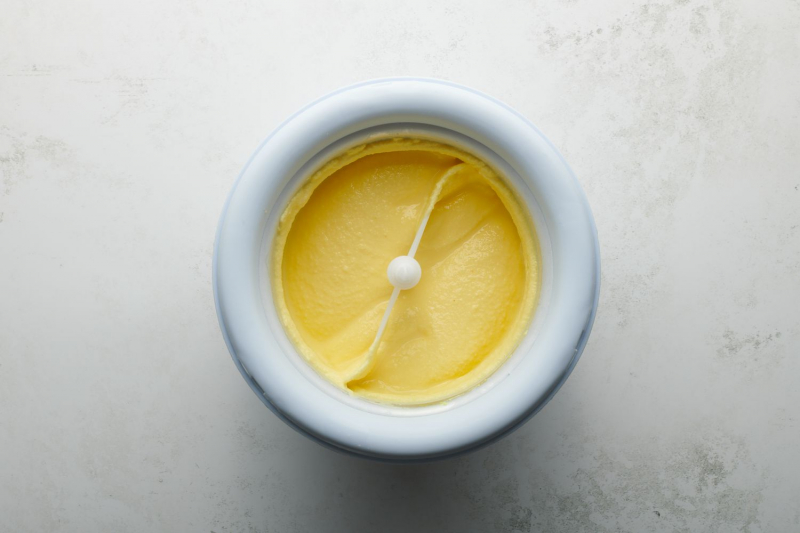
-
Break the frozen heavy cream into 1/2-inch pieces or smaller. Add with the pistachios to the ice cream's final churning stage.
Once churning is complete, the ice cream will have a soft and creamy texture, with visible pieces of pistachio and white flakes of frozen heavy cream.
Alternatively, freeze the ice cream longer for a firmer texture, about 2 hours more.
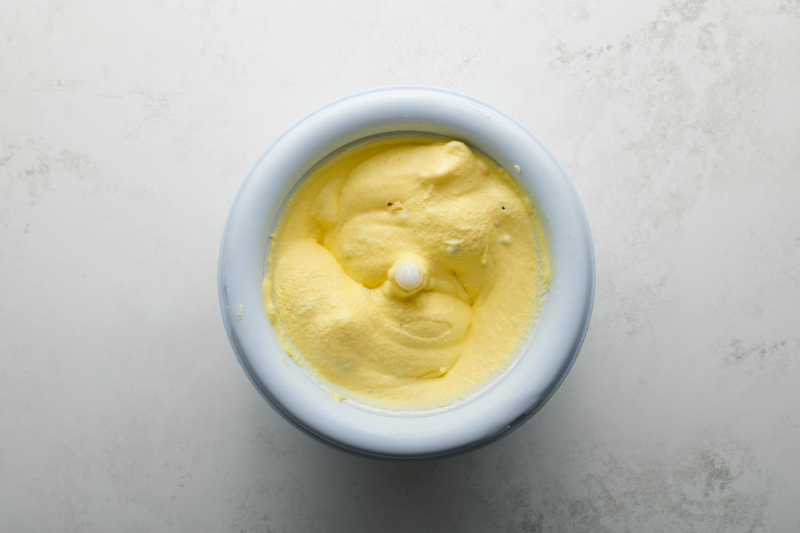
-
Transfer the ice cream to an air-tight, freezer-safe container. Place a piece of parchment paper directly on the ice cream's surface to prevent ice crystals from forming, and freeze for long-term storage.
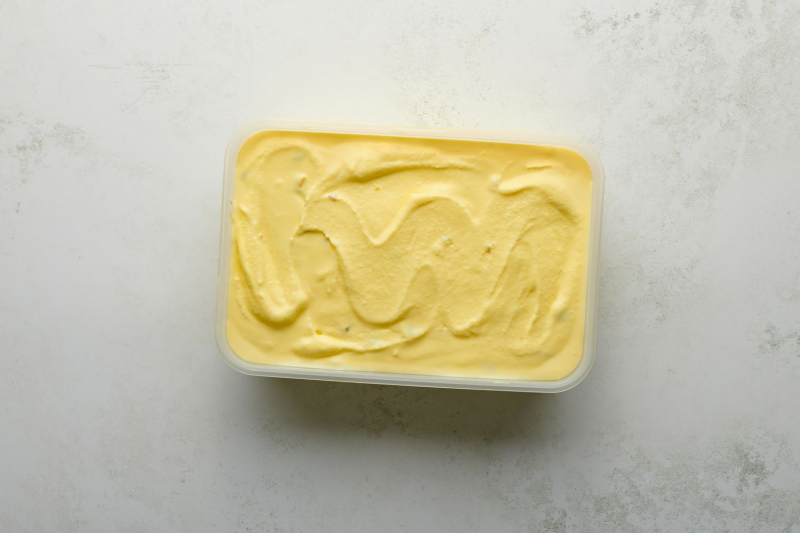
Recipe Tips
- Rosewater can be purchased at Persian or Middle Eastern markets, though it is also becoming more readily available in health food stores.
- Raw and unsalted pistachios are used for this recipe and can be found in most grocery stores. For a more vibrant green contrast to the saffron ice cream, the softer pistachio skin can also be removed. Place the pistachios in a towel and gently rub them to remove some of the reddish-brown skin before chopping them.
Recipe Variations
- Mastic may be eliminated from the recipe and does not need to be substituted.
- Arrowroot can be used in place of cornstarch.
- A store-bought vanilla ice cream can be purchased to use as a base to create this ice cream. Allow the ice cream to soften before incorporating the saffron-rosewater mixture and pistachios.
How To Make Ice Cream Without An Ice Cream Maker
If you are not using an ice cream maker, you can prepare the ice cream manually. Place the ice cream custard mixture in a deep, freezer-safe dish and place in the freezer for about 1 hour. Remove from the freezer and using a spatula break up the frozen bits from the edges. Vigorously stir them back in with a whisk, handheld mixer or blender. Return to the freezer, and then repeat this process every 20 minutes. Repeat until the ice cream is fully formed, about 2 to 3 hours, or until you have soft ice cream consistency. Add the previously frozen heavy cream chips and chopped pistachios and transfer to an airtight container. Cover with parchment paper and freeze for 4 hours.
How To Store Homemade Ice Cream
For best results, place a piece of parchment directly on the ice cream's surface to prevent ice crystals from forming on the surface. Store in an air-tight, freezer-safe container in the freezer for up to one month. To serve, remove the container from the freezer and place at room temperature for about 10 minutes to soften the ice cream.
What Is Mastic?
- Typically produced in Greece and other Mediterranean regions, and particularly on the Greek island of Chios, mastic is the dried resin or sap of an evergreen tree related to the pistachio. In the production process, incisions in the trees produce drops of resin that sparkle in the sun and are referred to as “tears of Chios.” It can be quite subtle and hard to identify when used in small amounts, but in larger quantities, it can also overwhelm a dish, so using it can be trial and error, both in quantity and in flavor matching. Its flavor has been described as ranging from fennel to anise, licorice, mint, vanilla, and pine, and all combinations of them.
- Mastic is typically sold as solid translucent small pieces of resin or powdered form that can be found at Greek or Mediterranean markets as well as regional spice shops. Alternatively, online retailers are a good source for it.
| Nutrition Facts | |
|---|---|
| Servings: 6 | |
| Amount per serving | |
| Calories | 508 |
| % Daily Value* | |
| Total Fat 34g | 43% |
| Saturated Fat 21g | 103% |
| Cholesterol 102mg | 34% |
| Sodium 130mg | 6% |
| Total Carbohydrate 46g | 17% |
| Dietary Fiber 0g | 1% |
| Total Sugars 42g | |
| Protein 7g | |
| Vitamin C 1mg | 3% |
| Calcium 195mg | 15% |
| Iron 0mg | 2% |
| Potassium 267mg | 6% |
| *The % Daily Value (DV) tells you how much a nutrient in a food serving contributes to a daily diet. 2,000 calories a day is used for general nutrition advice. | |